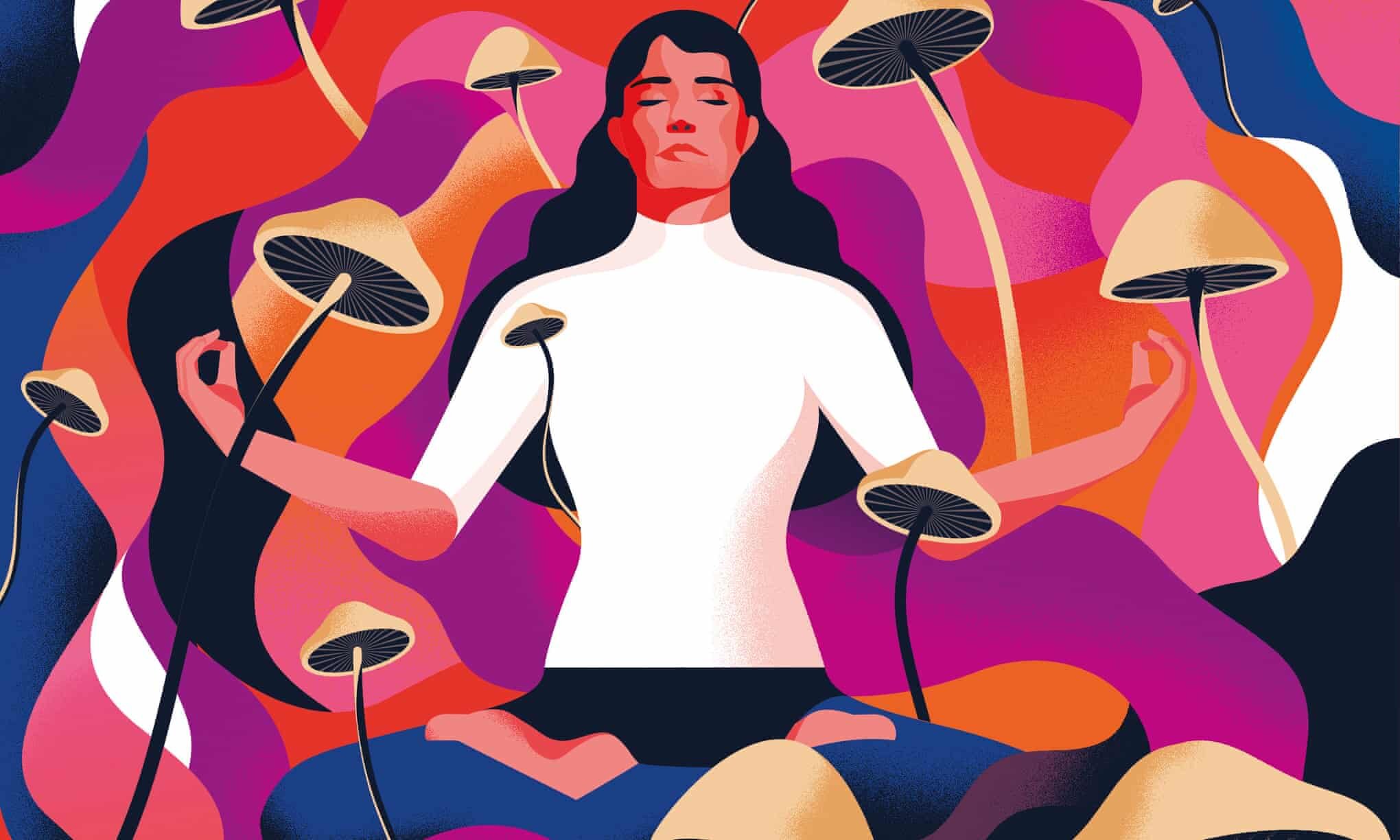“Magic Mushrooms” as a Potential Therapeutic Treatment
/By Elika Azizi
Image from The Guardian by Nathalie Lees/Observer
Psilocybin, the principal psychedelic ingredient of hallucinogenic mushrooms, has received significant attention as a scientific research tool due to its potential therapeutic effects. Psychedelic research was prolific during the 1960s but ceased with the Controlled Substances Act of 1970. This act placed serotonergic psychedelics, such as psilocybin and LSD, into schedule I of the US Drug Enforcement Administration’s list of controlled substances. However, human psychedelic research resurfaced in the 1990s and has been growing ever since. This article will examine psilocybin with its properties and potential for treating illnesses, such as chronic pain.
Also known as “magic mushrooms,” psilocybin is a very popular and frequently abused natural hallucinogen. It is known to induce spiritual states of consciousness associated with long-term favorable changes in cognition, mood, behavior, and spirituality that last for months to years. Evidence suggests that psilocybin assists with addiction, treatment-resistant depression, anxiety, cluster headaches, pain, and other neurological illnesses. While research shows that psilocybin has little to no effect on cardiac or body temperature changes at regularly used doses, some side effects include dizziness, tremor, nausea, vomiting, paresthesia, blurred vision, and increased tendon reflexes.
The effects of psilocybin vary with dosage concentrations. Low doses induce drowsiness and magnify pre-existing mood. Medium doses cause a well-controlled altered state of consciousness. Finally, large doses produce a significant psychedelic experience, occurring at doses above 15 mg of oral psilocybin. Oral psilocybin doses greater than 25 mg result in more intense levels of hallucinogenic states. Effects of psilocybin intoxication include alterations in perception—hallucinations, synesthesia—altered self-perception, depersonalization, impaired perception of time and space, mood swings, and thought content disorders like magical thinking and delusions.
Psilocybin predominantly induces its effects via serotonin 5HT2A/C and 5HT1A receptors. The altered states of consciousness are specifically mediated by increased activity of the 5HT2A receptors. Research also shows that psilocybin increases dopamine release in the ventral striatum of humans indirectly, associated with symptoms of depersonalization and euphoria.
There has been significant research on the use of psilocybin for a variety of disorders. For instance, recent research found psilocybin to have anxiolytic and antidepressant effects in terminally ill cancer patients. The studies highlight how psilocybin generates higher existential/spiritual well-being levels, resulting in an improved quality of life with decreased depression and hopelessness. Psilocybin has been shown to alleviate the effects of psychosocial distress, inner psychological well-being, and depression in many cancer patients.
Despite minimal clinical evidence for the use of psychedelics to treat chronic pain, case reports and research spanning decades have demonstrated that psychedelic substances have potential as a treatment for cancer pain, cluster headache, and phantom limb pain. Psilocybin’s effects on functional brain connectivity suggest its potential to reverse the alterations in neural connections seen in chronic pain conditions. For instance, psilocybin has been used to treat cluster headaches, where it has been shown to improve individual attacks and break the cycle of persistent cluster headache attacks. Although psilocybin is functionally similar to other migraine medications, these agonists have been shown to induce long-lasting reductions in headache intensity after a single or few oral doses. Additionally, a case study found that a patient’s persistent phantom limb pain was relieved upon introducing psilocybin to his treatment. Previous treatments proved ineffective in producing prolonged pain relief, including mirror-visual feedback. However, a single psilocybin session combined with mirror-visual feedback resulted in an instant and significant relief in debilitating pain that lasted longer than any previous treatment. The findings suggest that the potential effect of psilocybin on phantom limb pain may be due to the formation of new neural connections and pathways in brain regions associated with body self-image and pain perception.
Overall, psilocybin holds a lot of scientific and therapeutic promise. It is widely used in research due to its low risk of addiction and favorable safety profile. Psychedelic studies have discovered various important findings of the nervous system functioning, particularly the importance of the serotonergic system in processes like perception and emotion. As there has been little research on the efficacy of psilocybin in treating chronic pain, there is room for further research on its use. Ultimately, recent human studies indicate that psilocybin may be useful in the treatment of a variety of neurological illnesses.
References
Ramachandran, V., et. al. (2018). Relief from intractable phantom pain by combining psilocybin and mirror visual-feedback (MVF). Neurocase, 24(2), 105–110. https://doi.org/10.1080/13554794.2018.1468469
Ross, S., et. al. (2016). Rapid and sustained symptom reduction following psilocybin treatment for anxiety and depression in patients with life-threatening cancer: a randomized controlled trial. Journal of Psychopharmacology, 30(12), 1165–1180. https://doi.org/10.1177/0269881116675512
Schindler, E. A. D., et. al. (2021). Exploratory Controlled Study of the Migraine-Suppressing Effects of Psilocybin. Neurotherapeutics, 18(1), 534–543. https://doi.org/10.1007/s13311-020-00962-y
Tyls, F., et. al. (2013). Psilocybin – Summary of knowledge and new perspectives. European Neuropsychopharmacology, 24(3), 342–356. https://doi.org/10.1016/j.euroneuro.2013.12.006
Whelan, A., & Johnson, M. I. (2018). Lysergic acid diethylamide and psilocybin for the management of patients with persistent pain: A potential role? Pain Management, 8(3), 217–229. http://dx.doi.org.libproxy1.usc.edu/10.2217/pmt-2017-0068



